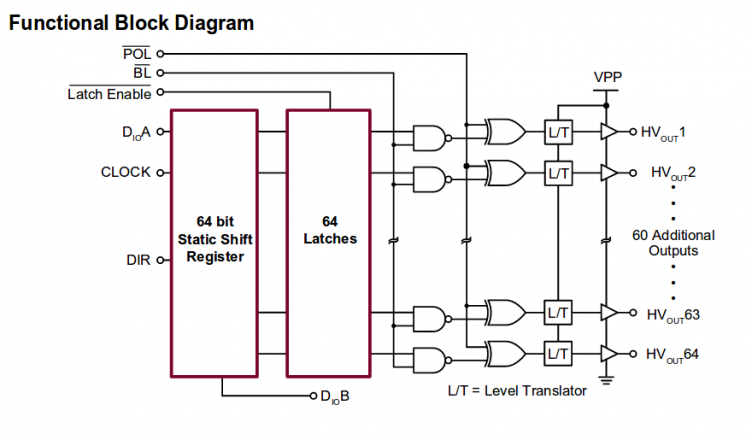The control of electrodes in digital microfluidics with alternating current (AC) seems to give better results than with static, direct current (DC) control [1]. Possible reasons are ”sticky” polarization of the material or the droplet and the “vibrating” effect of alternating actuation in AC. Now the control of the electrodes using AC voltages usually adds to the complexity of the circuit as the voltage source must be supplying AC and the switching element must able to switch AC. To get the good characteristics of AC and still keep things simple the following alternatives were tested:
On-off switching of the electrodes
In this case the activated electrode is simply switched on and off with a frequency of 1kHz. This can be easily done with the HV507 driver of the OpenDrop by modulating the BL pin. The switching was implemented with a timer interrupt to switch the pin.
First results (based on observation) is that the droplet movement is more reliable. This means it’s less likely to lose the droplet. It seemed that if the droplet did not move to the next electrode immediately it would still be triggered later. General the droplet movement seemed a bit floppier.
Top-Plate Switching
This control method switches the ITO cover glass together with the electrodes and thus creates a alternating field. The cover plate is simply connected to one output pin of the HV507 and the polarization of all the pins are switched through the POL line of the chip. In this case all electrodes of the array and the top plate would switch polarity synchronously.
First results (also on observation) seemed very promising. The movement of the droplet was clearly stronger and more reliable. Droplets that would not move in the DC configuration moved with ease on this AC-like control.
[1] AC Electrowetting Actuation of Droplets on a Digital Microfluidic Platform

